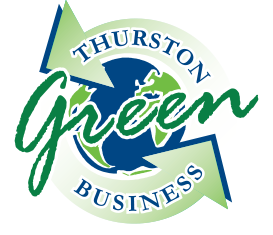The Struggle and Strategies for Ecosystem Restoration
Unveiling the Hidden Contamination Crisis in Budd Inlet
Budd Inlet and It's
Contamination Problem
History Matters
Contamination of sediment—the sand, mud, and silt under the water—varies in degree of severity throughout Budd Inlet. And while many factors contribute to this contamination, experts at Washington State Department of Ecology identified that historical industries located on the shore are a main factor.
From the 1920s through the 1980s, wood industries located along the shore created a toxic environment. Factories produced and used chemicals for treating wood, while also burning salt-laden wood, with little to no environmental regulation. Another source of contamination comes from stormwater runoff—the pollutants humans and animals create, like oil, fertilizers, pesticides, trash, and manure—that get washed down our storm drains and into the waterways.
Part of the problem is its location. Being the southernmost point means there’s limited circulation, creating a hot bed for contamination and toxins from surrounding urban areas. Additionally, the Deschutes River flows into Capitol Lake, which empties into Budd Inlet. Residents, businesses, and visitors, as well as the animals that rely on these waterways for survival, have high stakes in the health of the inlet.
Toxins and the Environment
Aquatic animals, like shellfish, that live on or within the contaminated sediment can suffer. Animals that eat these organisms can also be harmed, including orcas, salmon, bald eagles and other marine birds, harbor seals, and people.
The chemical byproducts in the sediment from the pre-regulated industrial days are polycyclic aromatic hydrocarbons (PAHs) and dioxins, which are known to cause cancer, and can affect reproduction and development in humans and animals.
PAHs and dioxins do not degrade, and as a result, are widespread in urban and industrialized areas, enough that most people are exposed to small amounts through daily activities. People can be exposed to higher levels of these pollutants by eating fish or shellfish from an area that is contaminated, or through skin contact.
Improvement Plan is Underway
While each of us can do our part to pick up our dog waste and use environmentally friendly options for fertilizer and pest control, it’s much more complicated to clean nearly seven miles of inlet floor.
That’s where the Port of Olympia comes in. Together, with partners like the Washington State Department of Ecology, Tribes, and others, a plan is in place—The Budd Inlet Cleanup and Restoration Project. Currently, the team is analyzing the most appropriate remedy for cleanup and restoration.
There are several options for managing contaminated sediment. One option is to transport the sediment to licensed commercial, municipal, or hazardous waste landfills. Another option is for contaminated sediments to be reused on nearby upland property, to mitigate sea level rise and create habitat areas.
The Port and its partners will evaluate all methods of managing contaminated sediment, taking into consideration cost, effectiveness, environmental protection, and impacts to navigability. Once a remedy has been selected, the Port will begin designing the project.
The project will take several years to complete. The Port is committed to transparency, thoughtful stewardship, and community involvement along the way.
More information about the project can be found at:
Explore
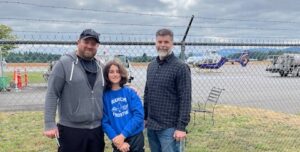
Soaring Dreams: A local 12-year-olds Journey into Aviation with the Port of Olympia
The Port of Olympia recognizes the value of the natural environment in which we operate and the importance of creating economic opportunities that are environmentally sustainable.
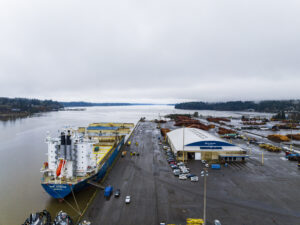
Reducing Our Environmental Footprint with Green Marine
The Port of Olympia recognizes the value of the natural environment in which we operate and the importance of creating economic opportunities that are environmentally sustainable.
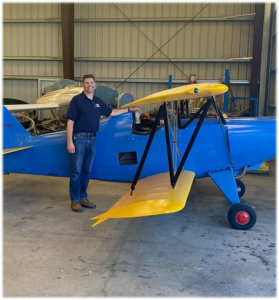
Port Tenant Spotlight: Second Star Aviation
On the surface, Budd Inlet is picturesque. Sailboats dot the water, pedestrians stroll the waterfront, and the Olympic Mountains are the perfect backdrop. But a deeper look shows a suffering ecosystem—one that impacts wildlife and humans alike.
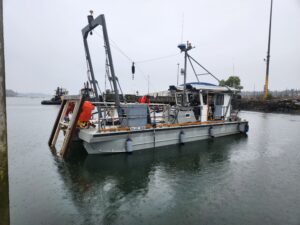
As West Bay Sediment Sampling Concludes, Port of Olympia Plans Next Steps for Budd Inlet Cleanup
On the surface, Budd Inlet is picturesque. Sailboats dot the water, pedestrians stroll the waterfront, and the Olympic Mountains are the perfect backdrop. But a deeper look shows a suffering ecosystem—one that impacts wildlife and humans alike.

Port to Host Public Observation Day on March 4 to Give Behind-the-Scenes Look at the Budd Inlet Cleanup
On the surface, Budd Inlet is picturesque. Sailboats dot the water, pedestrians stroll the waterfront, and the Olympic Mountains are the perfect backdrop. But a deeper look shows a suffering ecosystem—one that impacts wildlife and humans alike.
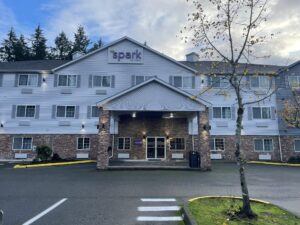
Port Tenant Spotlight: Fateh & Gurfateh Investors LLC
On the surface, Budd Inlet is picturesque. Sailboats dot the water, pedestrians stroll the waterfront, and the Olympic Mountains are the perfect backdrop. But a deeper look shows a suffering ecosystem—one that impacts wildlife and humans alike.


